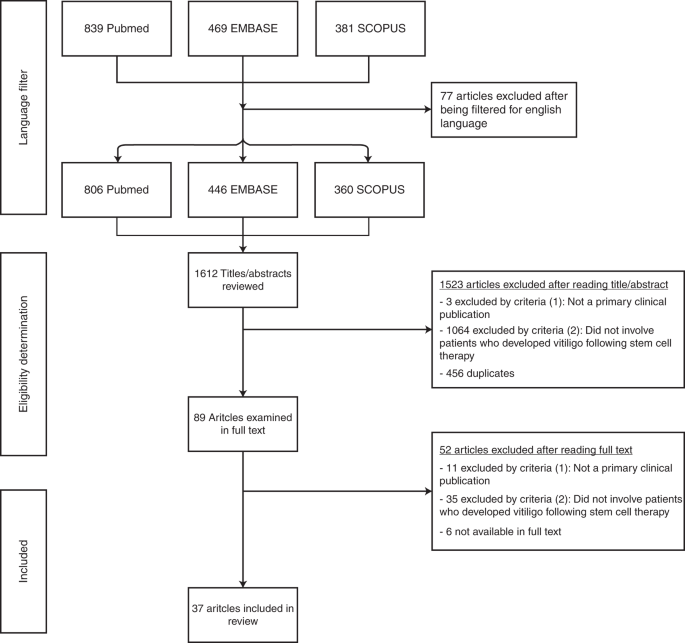Play all audios:
Vitiligo is an acquired skin disorder characterised by depigmentation of skin due to the selective destruction of melanocytes. The pathogenesis of vitiligo is still relatively unknown, but
associations between vitiligo and other systemic autoimmune diseases have been made, such as with patients who have undergone haematopoietic stem cell transplantation (HSCT) in the treatment
of haematological conditions. This article aims to review published literature that have reported the incidence of vitiligo following HSCT in order to understand their relationship, and any
potential connections between vitiligo and graft-versus-host disease (GVHD). On the 21st of May 2017, the databases Pubmed, EMBASE and SCOPUS were searched using the search terms Stem cell
or transplant or GVHD AND vitiligo or leucoderma or leucoderma. There was a total of 38 cases (from 28 case report articles) along with 9 cohort studies that were included in the review. The
studies reviewed showed that the incidence of vitiligo in patients who have received HSCT is higher than that of the normal population. Current studies are largely limited to single-case
reports, which have certain inconsistencies with regard to patient/donor profiling, and future studies should look to address these issues.
These authors contributed equally: Alessio Totani, Hossam Amin
Faculty of Health and Medical Sciences, The University of Adelaide, Adelaide, SA, Australia
Publisher’s note: Springer Nature remains neutral with regard to jurisdictional claims in published maps and institutional affiliations.
Anyone you share the following link with will be able to read this content:

